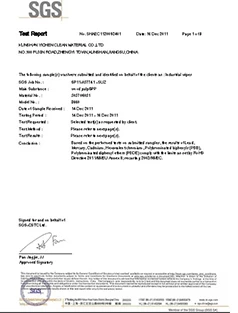Method of making a breathable, meltblown nonwoven
2017-03-27 16:46:37

The present invention relates to a method of making a breathable nonwoven fabric having enhanced moisture barrier properties. In particular, the invention pertains to a method of making a meltblown fibrous layer having an improved hydrohead performance (e.g. greater than 40 millibars (16 inches of H2O) and adjacent to at least one spunbond fibrous layer, wherein the method comprises secondary processing of the meltblown layer prior to bonding to spunbond layers. The resultant spunbond/meltblown (SM) nowoven fabric is breathable and characterized as having a cloth-like feel and softness and enhanced hydrohead performance rendering it suitable for use in, for example, the personal hygiene and medical markets for items such as infection control garments and coverings, incontinence pads and diapers, especially as a diaper backsheet or containment flap.
Nonwoven fabrics used in disposal garments, diapers, incontinence pads and other personal hygiene items are required to possess a number of important end-use attributes. Key performance attributes include breathability, cloth-like feel and softness, drapeability and conformability as well as act as a barrier against the penetration of liquids. Clothlike feel and softness and conformability relate to wearer comfort and both attributes tend to correlate to the suppleness of the nonwoven fabric. However, breathability and barrier properties are inversely related since breathability relates to the comfort of the wearer by facilitating respiration. That is, good breathability refers to the passage o moisture vapor. Alternately, good barrier properties relate to the impermeability of liquids and bodily fluids such as blood in the case of surgical gowns and urine in the case of disposable diapers.











